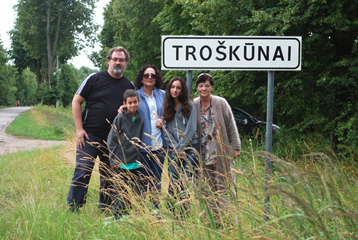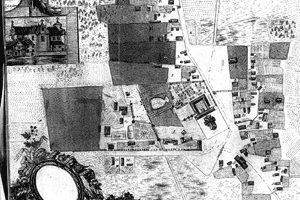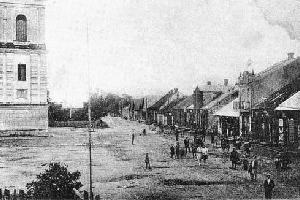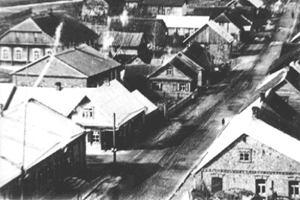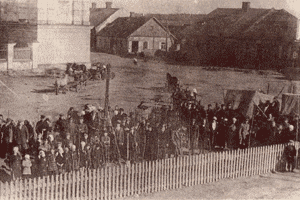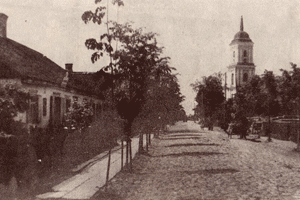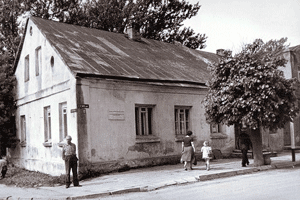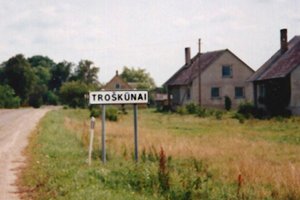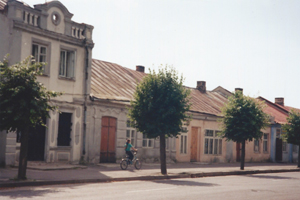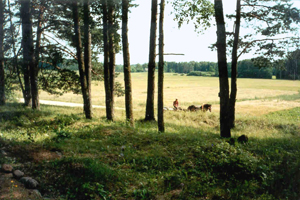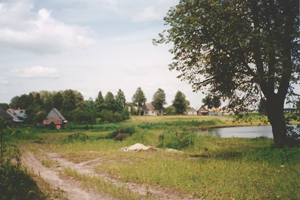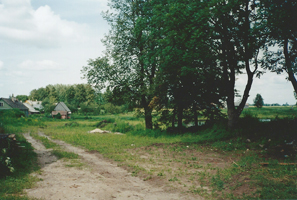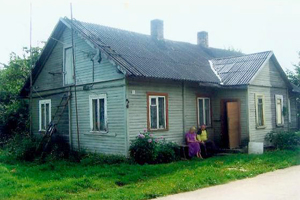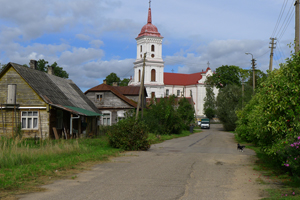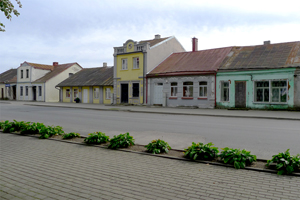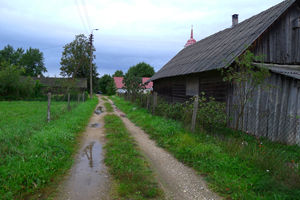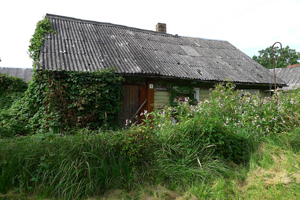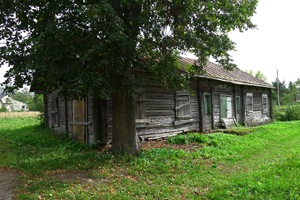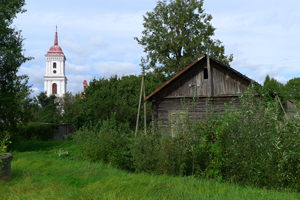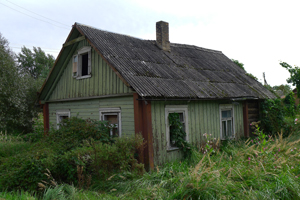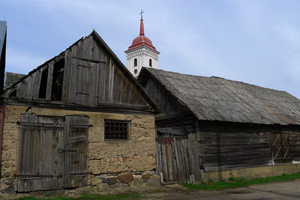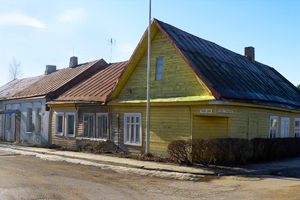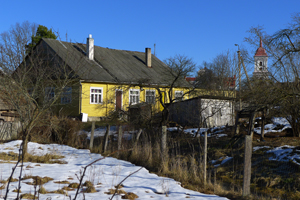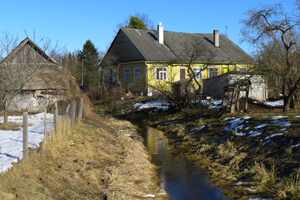Name & Spelling in Various Languages
| Lithuanian | Troškūnai | Troshkunai |
| Yiddish | טראַשקון | Trashkun, Troshkun, Trashkon |
| Russian before 1920 | Трашкуны | Trashkuni, Trashkuny |
| Russian after 1920 | Трошкунай | Troshkunai, Troshkunay |
| Polish | Traszkuny | Trashkuni, Trashkuny |
| Other Spellings | Troskun, Traskun, Traskon, Troshkon, Trashkin, Troszkun, Troskunai, Traskunai, Traškūnai, Traskianai, Trashkianai | |
Location & Maps of Troškūnai
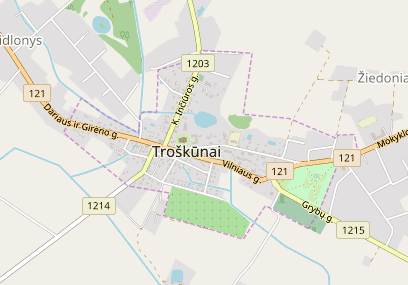
Troškūnai Today (view larger map on Open Street Map)
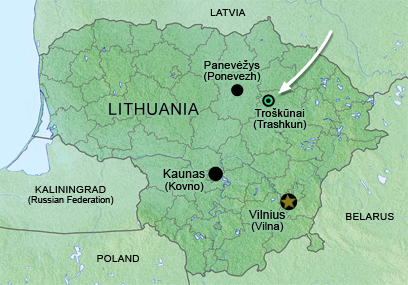
Latitude 55°58′68″N • Longitude 24°86′91″E (larger map)
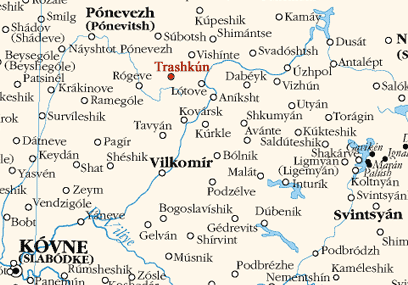
Regional map with Yiddish place names, by Dovid Katz (enlarge)
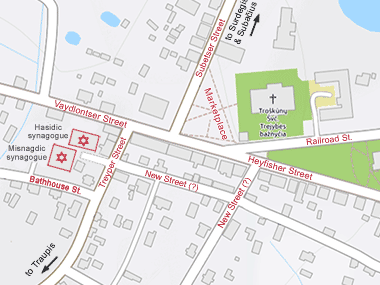
Yiddish/Lithuanian street names in Trashkun/Troskunai (enlarge)
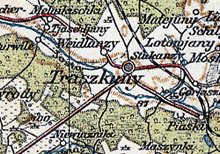
1911 (enlarge)
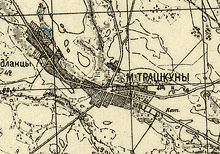
1899-1931 (enlarge)
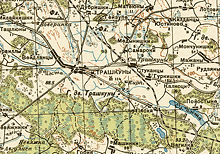
1939 (enlarge)
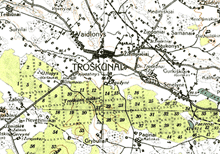
1920-1939 (enlarge)
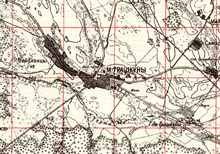
1928 (enlarge)
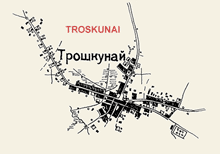
1944-1945 (enlarge)
- Current Maps:
- Google Map
- •
- Open Street Map
- •
- Yandex Map
- •
- Mapcarta Map
Geopolitical Status:
Geographical Regions of Lithuania • Locality Page for Troškūnai
See also Administrative Divisions of Lithuania (Wikipedia)
Brief Overview
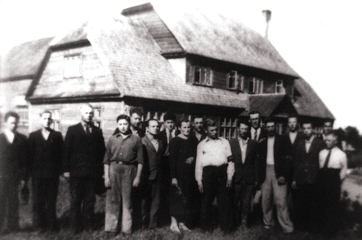
Misnagdic synagogue in Trashkun, late 1930s (enlarge)
In 1897 there were 779 Jews in Trashkun, 78% of the general population. In the summer of 1915 during World War I (1914-1918), most Jews were exiled into central Russia. Their houses were destroyed and their possessions were looted. After the war most of them returned to Trashkun and rebuilt their houses.
There were two synagogues in Trashkun, one for Misnagdim and one for Hasidim. A special personality was Reb Shneur (or Shneyer) Reznikovitz, born in 1881, a learned and pious man known in the surrounding villages as "the holy one" (hakadosh) and venerated by Jews and Gentiles alike.
VIDEO A remembrance of Reb Shneyer
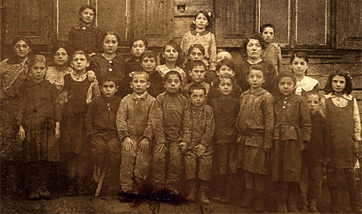
Primary school students in Trashkun (~1915)
(enlarge, read about school)
During the period of Lithuania's independence (between the two world wars) the community had a school and a library. Most of the young people were in one of the zionist groups Hashomer Hatzair[NOTE]Hashomer Hatzair (Hebrew for “The Young Guard”) was a socialist zionist youth movement that established kibbutzim and prepared young Jewish people for a new life in Palestine. or Hechalutz.[NOTE]Hechalutz (Hebrew for “The Pioneer”) was a youth movement that trained young Jewish people for agricultural settlement in Palestine. The Jews of Trashkun made a living in trade, artisanship and gardening. A wine distillery was in Jewish hands. Thursday was the weekly market day. The Jewish bank had 96 members in 1929; its director for many years was Rabbi Yakov Moshe Shmukler. Prior to World War II there were about 120 Jewish families in Trashkun.
— Jewish Communities Database of The Museum of the Jewish People
and Lithuanian Jewish Communities by Nancy and Stuart Schoenburg
(New York & London: Garland, 1991), p. 313.
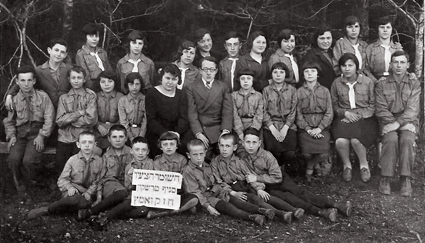
Hashomer Hatzair of Trashkun (1930) (enlarge)
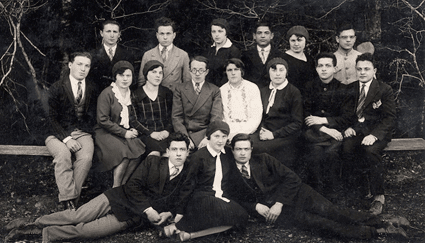
Chalutizm (zionist pioneers) of Trashkun (1930) (enlarge)
For a more extensive historical and cultural overview, see "Troškūnai (Trashkun)" from Josef Rosin's book Protecting Our Litvak Heritage. (Note one error: The monument shown in the article is not from Trashkun.)
Miscellaneous
- Jewish Families of Troskunai (1920-1924), two lists compiled by the Troskunai Jewish Community Council during the interwar years
- Troskunai residents who applied for immigration to Palestine, 1920-1940 (incomplete list)
- Once Upon A Time In Panemune by Lauras Sabonis, the story of Miriam Shumacher Krakinowski's rescue by Jonas Paulavičius
- Telephone Listings for Troškūnai ☎︎ : 1925 • 1930 • 1935 • 1938 • 1939 • 1940
- VIDEO Silent video of Troskunai in 1989, a year before Lithuania gained independence from the Soviet Union
- "Troškūnai (Trashkun)" from Protecting Our Litvak Heritage by Josef Rosin.
(Note: The monument shown in this article is not from Troskunai. See Troskunai monuments.) - Inventory of Troskunai Property Owners in 1810
- Yad Vashem Central Database of Shoah Victims' Names: Troskunai pages of testimony • Search entire database
(please be patient while Yad Vashem database is queried)
Images of Troškūnai, past & present
VIDEO Troskunai in 1989 [0:38]
(click images to enlarge)
Photographs by Jolita Kievišienė:

Old Jewish Cemetery, 2018
(more photos of Old Jewish Cemetery)
We are grateful to everyone who has sent us information, memoirs, photos, comments and corrections. Special thanks to Misha Glezer,
Jonathan Levine, Sonia Kovnovich Mandel, the Krakinowski family, Bina Glezer, and Jolita Kievišienė. — Sonia & Johanna Kovitz
Please send your comments, corrections, links, and any additional materials. All input is welcome.


